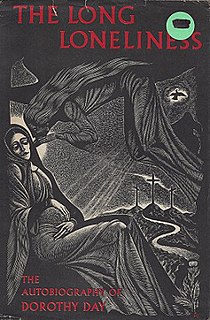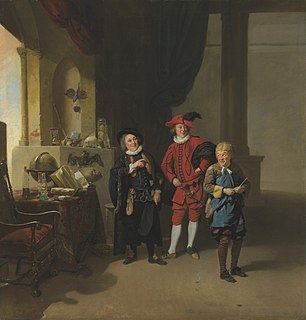Overview
The book is one of the "Dead Hand" series: six books Sinclair wrote on American institutions. The series also includes The Profits of Religion , The Brass Check (journalism), The Goose-step (higher education), The Goslings (elementary and high school education), and Money Writes! (literature). The term "Dead Hand" criticizes Adam Smith's concept that allowing an "invisible hand" of many people's individual self-interests to shape economic relations provides the best result for society as a whole.
Sinclair intended Mammonart to be an alternative "textbook of culture" (p. 384). He says he expected it to soon be used as a textbook in Russian high schools, and hoped that it would be adopted by other European countries after they experienced Socialist revolutions.
In each chapter, Sinclair critiques an artist according to his or her support for the rich and powerful. Most artists do not challenge the status quo and take positions such as 'art for art's sake' or 'art is entertainment.' No matter how beautiful their work, by their passivity such artists perpetuate oppression and inequality.
For example, in the chapter on Shakespeare, entitled "Phosphorence and Decay," Sinclair praises the writer's glorious facility with words; however, this great talent "saved him from thinking." In contrast, Dickens' unique contribution was to "force into aristocratic and exclusive realms of art the revolutionary notion that the poor and degraded are equally as interesting as the rich and respectable."
Mammonart is notable for Sinclair's repeated statement that all art, including his own, is propaganda. The popular distinction between propagandists like Jesus and Tolstoi, and Shakespeare and Goethe, who are "pure and unsullied creative artists ... is purely a class distinction and a class weapon..." (p. 106)
The list of artists discussed is similar, though shorter, to a 1940 list of Great Books. Sinclair also includes writers of lesser importance who were included at the time in the American literary canon.
Artists discussed:
Mammonart was reprinted in paperback in 2003 by Simon Publications, ISBN 0-9725189-7-5.
Political fiction employs narrative to comment on political events, systems and theories. Works of political fiction, such as political novels, often "directly criticize an existing society or present an alternative, even fantastic, reality". The political novel overlaps with the social novel, proletarian novel, and social science fiction.

Highgate Cemetery is a place of burial in north London, England. There are approximately 170,000 people buried in around 53,000 graves across the West and East Cemeteries. Highgate Cemetery is notable both for some of the people buried there as well as for its de facto status as a nature reserve. The Cemetery is designated Grade I on the Register of Historic Parks and Gardens. It is one of the Magnificent Seven cemeteries in London.
This article contains information about the literary events and publications of 1864.
In these times of ours, though concerning the exact year there is no need to be precise...

Edward Dowden was an Irish critic and poet.
Several anthologies of religious poetry have been published by Oxford University Press.
The year 1888 in art involved some significant events.

Dying Inside is a science fiction novel by American writer Robert Silverberg. It was nominated for the Nebula Award in 1972, and both the Hugo and Locus Awards in 1973.

The Long Loneliness is the autobiography of Dorothy Day, published in 1952 by Harper & Brothers. In the book, Day chronicles her involvement in socialist groups along with her eventual conversion to Catholicism in 1927, and the beginning of her newspaper the Catholic Worker in 1933.

Indiana Repertory Theatre, frequently abbreviated IRT, is a professional regional theatre in Indianapolis, Indiana that began as a genuine repertory theatre with its casts performing in multiple shows at once. It has subsequently become a regional theatre and a member of the League of Resident Theatres. A standard season typically consists of nine or ten plays on two different stages and the bulk of its season performed on the OneAmerica Stage.
The social novel, also known as the social problemnovel, is a "work of fiction in which a prevailing social problem, such as gender, race, or class prejudice, is dramatized through its effect on the characters of a novel". More specific examples of social problems that are addressed in such works include poverty, conditions in factories and mines, the plight of child labor, violence against women, rising criminality, and epidemics because of over-crowding, and poor sanitation in cities.

Alchemy has had a long-standing relationship with art, seen both in alchemical texts and in mainstream entertainment. Literary alchemy appears throughout the history of English literature from Shakespeare to modern Fantasy authors. Here, characters or plot structure follow an alchemical magnum opus. In the fourteenth century, Chaucer began a trend of alchemical satire that can still be seen in recent fantasy works like those of Terry Pratchett.

The Book League of America, Inc. was a US book publisher and mail order book sales club. It was established in 1930, a few years after the Book of the Month Club. Its founder was Lawrence Lamm, previously an editor at Macmillan Inc. The company was located at 100 Fifth Avenue, New York City, New York in a 240,000-square-foot (22,000 m2) office building that was constructed in 1906. It printed and distributed a variety of volumes in the 1920s, 1930s, 1940s, and 1950s. A victim of the Great Depression, the Book League of America was purchased by Doubleday in 1936.
The Guthrie Theater is a center for theater performance, production, education, and professional training in Minneapolis, Minnesota. The following is a chronological list of the plays and performances that it has produced or presented. Production information from 1963 through the 2005–06 season is sourced primarily from The Guthrie Theater: Images, History, and Inside Stories and The Guthrie Theater.

Robert William Buss was a Victorian artist, etcher and illustrator perhaps best known for his painting Dickens' Dream. He was the father of Frances Buss, a pioneer of girls' education.

100 Classic Book Collection, known in North America as 100 Classic Books, is an e-book collection developed by Genius Sonority and published by Nintendo, which was released for the Nintendo DS handheld video game console. First released in Europe in December 2008, it was later released in Australia in January 2009, and in North America in June 2010. The game includes one hundred public domain works of literature.

The Dickens family are the descendants of John Dickens, the father of the English novelist Charles Dickens. John Dickens was a clerk in the Royal Navy Pay Office and had eight children from his marriage to Elizabeth Barrow. Their second child and eldest son was Charles Dickens, whose descendants include the novelist Monica Dickens, the writer Lucinda Dickens Hawksley and the actors Harry Lloyd and Brian Forster.
The Taylorian Lecture, sometimes referred to as the "Special Taylorian Lecture" or "Taylorian Special Lecture", is a prestigious annual lecture on Modern European Literature, delivered at the Taylor Institution in the University of Oxford since 1889.










